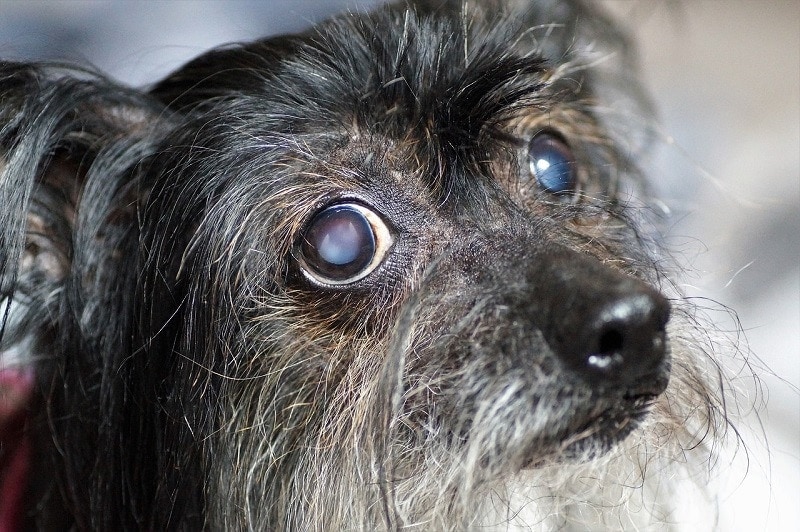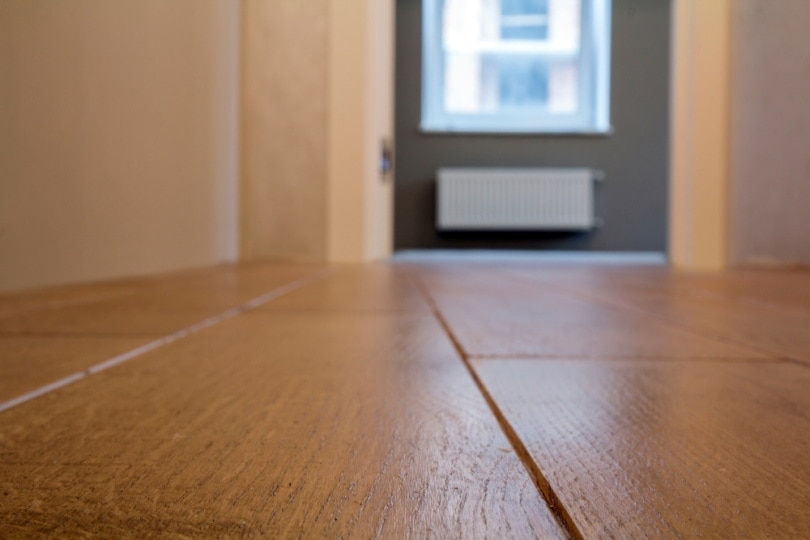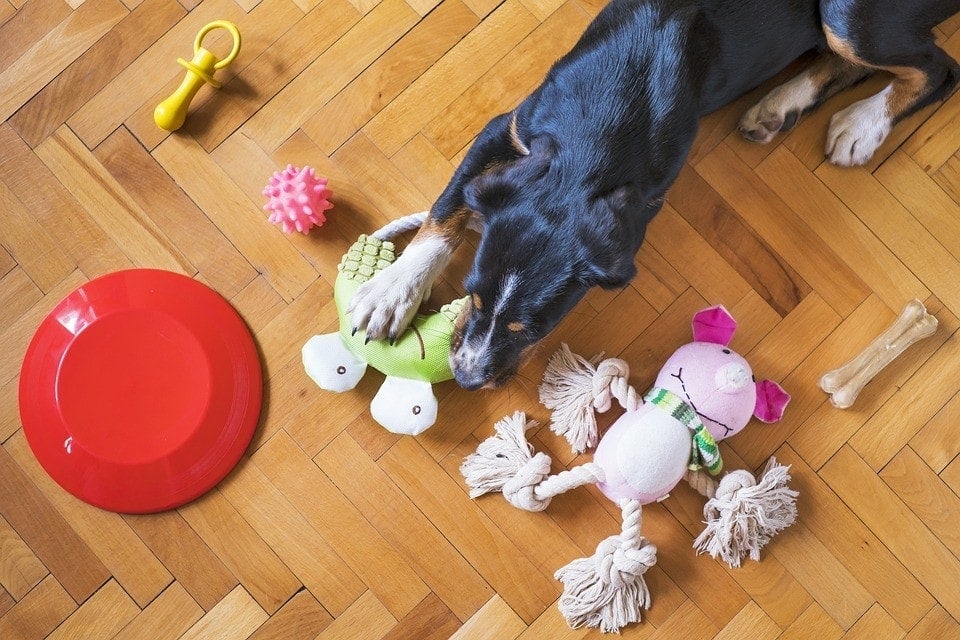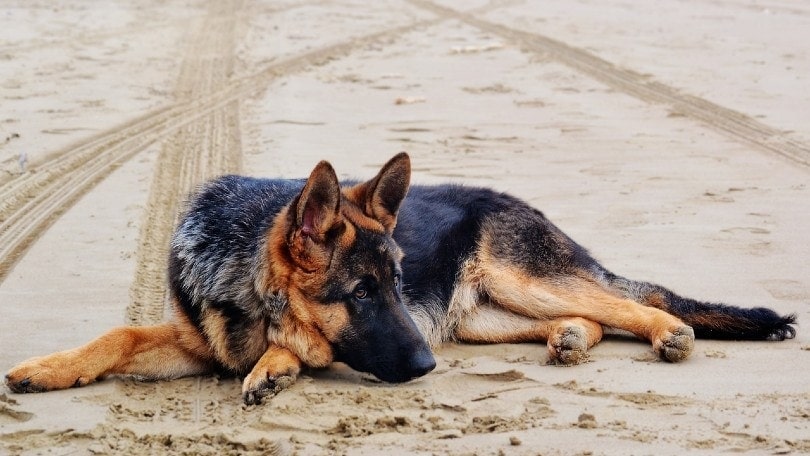How to Safely Leave Your Blind Dog Home Alone: 10 Easy & Effective Tips

Updated on

Living with a blind dog has its unique set of challenges. However, with some adjustments, you and your pet can adapt to his blindness and live a fulfilling life together. While some minor adjustments must be made, your pet can still enjoy long walks, family outings, and being left home alone.
When a dog loses sight, his other senses will become sharper, especially his sense of smell and hearing. His whiskers will even begin to play a massive role in how he navigates his world. Here’s how to create a safe environment for your blind pup to bask in while you’re out and about.
A Period of Adjustment
If your pet has recently become blind, there will be an adjustment period for him and you. His newfound blindness can affect his confidence and may cause separation anxiety. You will need to go the extra mile to help make your pup feel safe and secure, especially when you have to leave the house. Your pet will quickly learn to use sound and smell to map out his home.
Before leaving him for hours on end, start by leaving your blind dog alone for 30-minute periods. Gradually increase the time you spend away. Never make a huge fuss when you return. This will increase their anxiety when you leave again.
The 10 Easy Tips on How to Safely Leave Your Blind Dog Home Alone
1. Get A Dog’s Eye View
Get on the ground to see your home from your dog’s eye level. See if he can bump into any doorknobs, handles, or other hazards. Put pipe insulation or bubble wrap over knobs and handles.

2. Leave All Furniture in Place
After your blind pet successfully maps out his surroundings based on sound and smell, he will expect furnishings and other objects to be in certain places. When leaving him alone, ensure that every item is in its proper place.
If you accidentally leave a chair pulled back, your dog may bump into it because he wasn’t expecting it to be there. Be sure to always leave his water and food bowls in the same spot. Never make your home an obstacle course for your blind dog.
3. Get Rid of Potential Hazards
Before you leave the house, be sure to remove all objects from the tops of tables and cabinets. If your blind dog accidentally bumps into furniture, an item could be knocked off and injure or scare him.
You should also be mindful of cords and sharp corners. Your dog could trip over the cords or cut himself, colliding with a sharp corner. Put bubble wrap, foam, or baby bumpers on the corners of walls and sharp-edged furniture. Use doggy gates to block off decks, balconies, or staircases.
To alert your pet, put different textured mats or rugs near his food bowl, steps, and other obstacles to alert him. He will soon grasp the concept of what each rug means.
4. Cater to His Sense of Smell
As we said before, your blind dog’s sense of smell will become sharper. Use dog-safe fragrances in different areas of your home to help your pet know what room he is in. For instance, you can use dried lavender in the room with his bed and sage in the living room.

- Related Read: 6 Best Essential Oils for Dogs – Reviews & Top Picks
5. Set Up a Safe Space
Create a space where your pet can feel safe and secure. It can be his crate or a corner. Put his bedding, blankets, and favorite toys there.
6. Leave the Radio On
Soothing music will help your blind dog feel less alone. He can also use the music to know where he is by following the sound.
7. Toilet Areas
If your blind dog is older and can’t control his bladder, use a dog toilet or puppy pads so he can easily relieve himself. Places the items near his safe space for easy access.
If you have a doggy door, put up wind chimes so your dog can identify where the door is. Be sure to fill up any holes in your yard and remove sharp objects, such as sticks and rocks.
8. Use a Pet Cam
To easily keep tabs on your pup, set up a pet cam in your home. That way, you can keep a close eye on him even when you’re gone.
10. Provide Mental Stimulation
Blind dogs can quickly become bored or frustrated. Ease your blind dog’s anxiety and keep him occupied by supplying plenty of chew toys. Avoid giving your toys that could lodge in his throat or wooden toys that can splinter easily.

The Bottom Line Of Leaving A Blind Dog Alone
Your blind dog can safely spend time by himself. He will quickly adapt to his loss of eyesight and find new ways to map out his world. As with any significant change, it will take time and patience for both of you to adjust properly. Always be mindful of your home and make the changes needed to create a safe and secure space for your blind dog.
Featured Image: ivabalk, Pixabay











